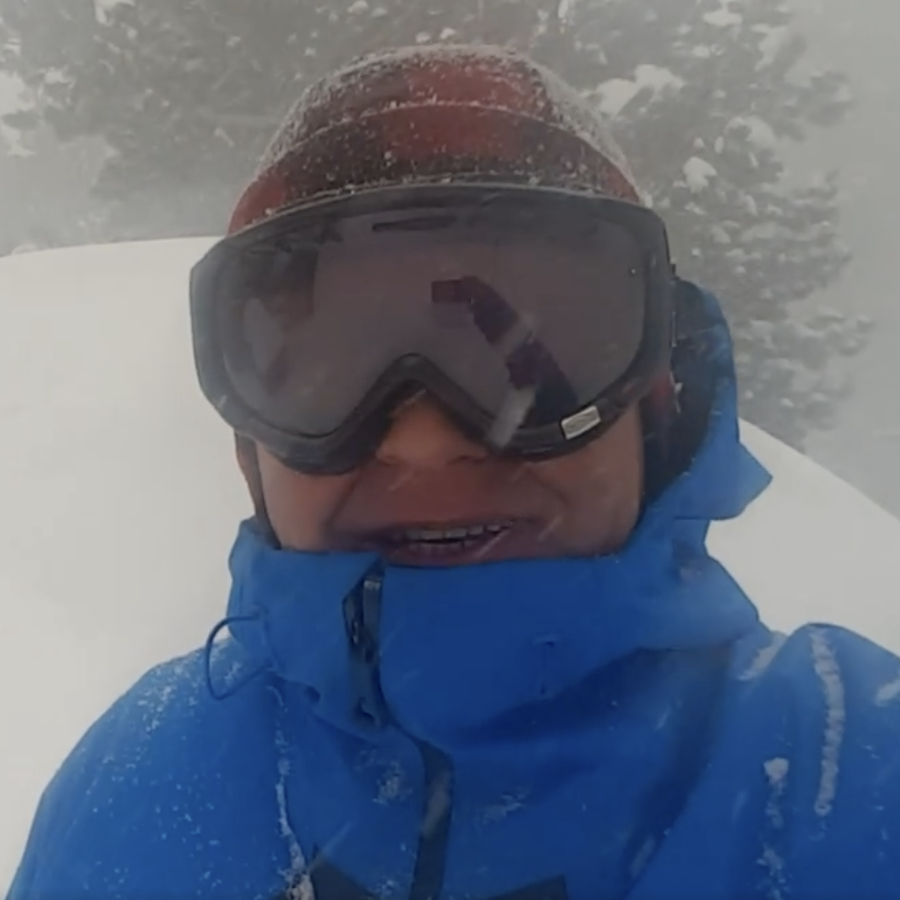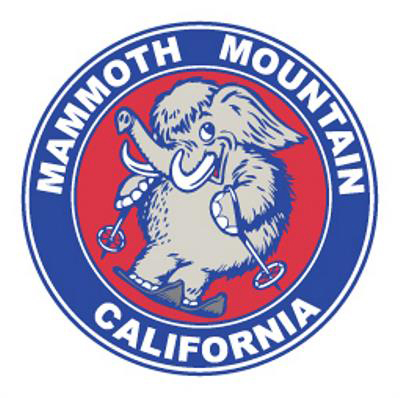 Snowman’s Mammoth Mountain Interview 2012
Snowman’s Mammoth Mountain Interview 2012
Mammoth Mountain got a call from Chris Santella in early October 2012. Chris was looking to write a chapter about skiing and riding at Mammoth. He was looking for a local who had a passion for the local area. The mountain sent Chris over to Snowman. Below is the write-up they came up with last week.
California – Mammoth Mountain Recommended by Steve Taylor, The Snowman
“There are so many attributes that make Mammoth a place skiers and boarders need to visit before they take off for the great hereafter,” Steve Taylor – aka the Mammoth Snowman – began. “On any given day during the season, you’ll be able to find some really good snow to ski on. On many mountains, that’s not the case. I’m out there 120 to 150 days a year, and I always find some good snow. Another aspect of Mammoth that’s unique is the wind. The wind is not always your friend on the mountain, but there are times when it works in your favor at Mammoth – it creates this phenomenon that we call wind buff. The wind buff is this soft, powdery snow that coats the surface of the hill. It’s incredible to ski on. Finally, Mammoth has one of the longest seasons of any resort anywhere. The management has a policy that they’ll begin running chairs as soon as there’s enough snow, even if it’s just one section of the mountain. I have skied as early as the first week of October, and as late as August 16th.”
Mammoth Mountain is located along the eastern spine of the Sierra Nevada range, just below the southeastern edge of Yosemite National Park. (The area is often associated with southern California as Southlanders make up the lion’s share of its visitors. Most maps, however, place Mammoth in the northern half of the state; difficult mountain passes make for a long trip for Bay Area residents to reach Mammoth, and they tend to head for the Lake Tahoe region.) Mammoth is California’s tallest ski area, with a top elevation of 11,053 feet, and one of the largest, with 3,500 acres of terrain. Yet the name comes not from its outsize proportions, but its mining roots; one of the companies seeking gold here in the 1880s was the Mammoth Mining Company. The mountain has a volcanic provenance, and though the last eruption is believed to date back 50,000 years, carbon dioxide is still emitted from fumaroles around the slopes. (In 2006, three ski patrol members perished, falling into a geothermal vent they were attempting to fence off. The resort monitors emissions from the mountains to help ensure visitor safety.)
Ski areas – at least in their inception – are often the inspiration of several committed individuals. No major area may be more associated with a single person than the relationship Mammoth has with its founder, Dave McCoy. McCoy was an enthusiastic skier from El Segundo; he was California state champion in 1938. That same year, he began operating a rope town on McGee Mountain, and by 1941, he’d obtained a roving permit for a portable rope tow. His favorite spot to take the tow was the north side of Mammoth. The Second World War interrupted McCoy’s ambitions for Mammoth, but once the war concluded, he installed a permanent tow on the mountain and conveyed skiers to the tow with several surplus army snow vehicles. McCoy eventually secured a permit from the U.S. Forest Service to further develop the mountain for winter recreation, and by 1955, he erected the first chairlift. Today there are 32 lifts in total; McCoy, who is 97 as of this writing, sold his interest in Mammoth for $365,000,000. “Dave McCoy really pioneered grooming methods,” Steve continued. “He built a big service garage, and worked on answering the question, ‘how do you groom the snow so people can enjoy it?’ Today, Mammoth has over 30 grooming machines, and they cover 800 to 1000 acres a night. Intermediate skiers and riders can find endless groomed runs, trails like Solitude, which is football field-wide.”
Mammoth is known for its annual snowfall of 400+ inches and its extensive sunshine – 300 days on average. If Steve has it his way, he’d prefer to see snow falling when he rises. “If we get a day when it’s snowing in the morning, I’ll get my kids ready for school and drop them off,” he said. “Next, I’ll grab a bagel and coffee at Stellar Brew & Deli and head to the mountain. I want to be at the lift line at Little Eagle 15 minutes before it opens. If it’s snowing hard enough, they might close the upper mountain, but Lincoln Mountain [which is served by Little Eagle] stays open, as it’s lower and heavily treed. You can run laps there until the winds are above 75 miles per hour. If the upper mountain is open and you’re an advanced skier, you want to make sure you get to the top of the Panorama Gondola and Chair 23 and check out Climax, the Dropout, and Wipeout Chutes and Paranoid Flats. There are a few days a year when we’ll see a couple of feet of snow during the day. When it’s snowing 3” or 4” an hour, you get the sensation that the powder is accumulating faster than you can track it out. A lot of the more casual skiers stay inside, so you have endless fresh powder. People not used to the wind might be discouraged by it, but I encourage people to just put on an extra layer and a face mask and head out.”
Given its relative proximity to Los Angeles and the Southland’s surf and skateboard culture, it’s not surprising that Mammoth has emerged as a favorite destination for snowboarders. The area features eight terrain parks that include the 18-foot SuperPipe and the 22-foot Super-Duper Pipe. (Many snowboarding champions, including Shaun White, are frequent visitors.) “In the time I’ve been skiing, I’ve seen the progression of Mammoth as a freestyle and border destination,” Steve described. “It’s consistently rated among the top terrain park experiences. The snowboarder theme at Mammoth is defined by the Peanut Butter Rail Jam, which is held each spring. I’ve seen 4,000 or 5,000 people packed into the event.” (Sponsored by the sports clothing manufacturer Volcom, the Peanut Butter Rail Jam is an amateur snowboard contest where contestants can perform a series of tricks on rails and other apparatus. Win or lose, participants receive peanut butter and jelly sandwiches.)
“I remember driving up to the mountain one morning,” Steve recalled. “It had snowed three or four feet the night before, really cold, Utah-style powder. I was pretty excited. I put on the radio, and the U2 song ‘Beautiful Day’ came on. [If you’re not familiar with the song, the chorus goes, “It’s a beau-ti-full day!” I got chills on my arms. I got to Canyon Lodge early that day and was on the very first chair on Chair 22. I came off the chair and was the first person coming down a trail called Viva. You’re in view of everyone coming up to Chair 22 when you’re at the top of Viva. I was hearing the U2 song in my head, and when I made my first turn, the folks on the chairlift gave a loud ‘Woo-hoo!’ and I called back.
“When I got home, my daughter said, ‘You know, you pocket called me today. I could hear you screaming Woo-hoo!’
“Incidentally, it was a bluebird, sunny day.”
Steve Taylor – The Snowman began skiing at Mammoth Mountain in 1969, and made the move north from Los Angeles in 1990 to be closer to the slopes. He started his first Internet Blog Reports in the summer of 1990 on Mammoth’s first BBS system, and today regularly broadcasts snow reports and video footage on www.mammothsnowman.com. “I started the website because I wanted to get skiers from the Los Angeles area excited about coming up so I wouldn’t have to ski alone,” Steve explained. “Now I have 20,000 new friends, thanks to the site.” Steve still skis 100+ times a year and runs a local advertising agency, Steve Taylor Marketing.







